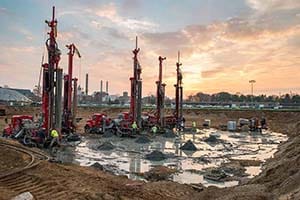
The University of Notre Dame ceased burning coal at its power plant today, more than a year ahead of schedule.
Notre Dame President Rev. John I. Jenkins, C.S.C., announced in the fall of 2015 the ambitious goal of discontinuing the use of coal by the end of 2020, and cutting the University’s carbon footprint in half by 2030. Both goals have been achieved ahead of their target dates.
“Guided by the wisdom of Pope Francis in his encyclical Laudato Si’, we have used a multi-faceted strategy to make our campus more sustainably responsible,” Father Jenkins said. “I am proud of our progress, while realizing that we have still more work to do.”
Because of combined efforts laid out in the University’s Comprehensive Sustainability Strategy, Notre Dame has achieved a 50 percent reduction in carbon emissions per gross square foot based on 2005 levels, accomplishing the goal well before 2030. The University accomplished these goals by reducing energy consumption, diversifying its energy sources and expanding and evolving its energy infrastructure to increase efficiency and capacity.
Notre Dame achieved 50% reduction in carbon emissions
Per gross square foot based on 2005 levels
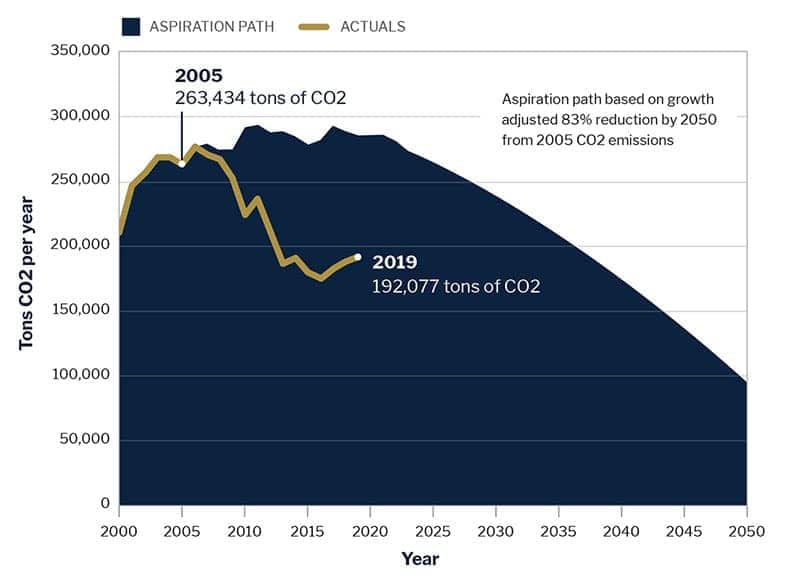
Since 2008, the University has implemented numerous energy conservation measures including installing energy-efficient lighting, establishing temperature set points, tightening building operating schedules, optimizing lighting and HVAC controls, using low-flow water devices, installing a computer-based irrigation system, applying energy analytics, applying variable-frequency drives on pumps and fans, installing the state’s largest green roof system and pursuing a minimum of LEED silver certification standards for all new construction. When aggregated, the energy conservation measures not only contribute to a reduction of carbon emissions, but also generate an annual savings of more than $2 million.
Key milestones in Notre Dame energy sustainability
-
1865
University begins using coal to heat and light campus.
-
1931
University builds steam plant that continues to operate today.
-
1962
University installs Central Plant that operates on chilled water to provide air conditioning to new buildings.
-
1973
University diversifies energy sources, moving away from coal.
-
2008 to date
University implements Energy Conservation Measures, phases 1-4, including lighting replacements and controls, HVAC controls and set points, water conservation, energy metering, and building design standards.
-
2009
University installs emission controls to ensure clean air.
-
2010
University reduces coal consumption by 50 percent.
-
2011
All new facilities are built to LEED Silver status, at a minimum.
-
2015
University announced it would cease to burn coal and cut its carbon footprint by more than half by 2030.
-
2016
East campus geothermal well fields installed.
University reduces coal consumption by 90%.
-
2017
University installs solar array at Kenmore Warehouse.
-
2018
South campus geothermal well fields installed.
-
2019
I&M announces solar facility partnership with Notre Dame, directing 40 percent of output to University when it opens in late 2020.
East Plant opens, utilizing geothermal well fields underneath Ricci Fields, to power Dunne, Flaherty and McCourtney Halls.
-
2021
Notre Dame hydroelectric generation facility projected to begin operating.
Notre Dame’s implementation of technology has further increased its energy efficiency. The University began using two new natural-gas-fired combustion gas turbines with heat-recovery steam generators earlier this year. These units operate in a combined cycle with other existing systems to produce both electricity and steam. This energy production is twice as efficient as a traditional electrical plant. The steam produced through the heat-recovery steam generators, powered in part by the gas turbine exhaust, is further used to heat campus, produce hot water or drive equipment to provide air conditioning for campus.
The University is also diversifying its energy sources to include renewable and recoverable energy from geothermal, solar and hydroelectric technology.
Energy sources

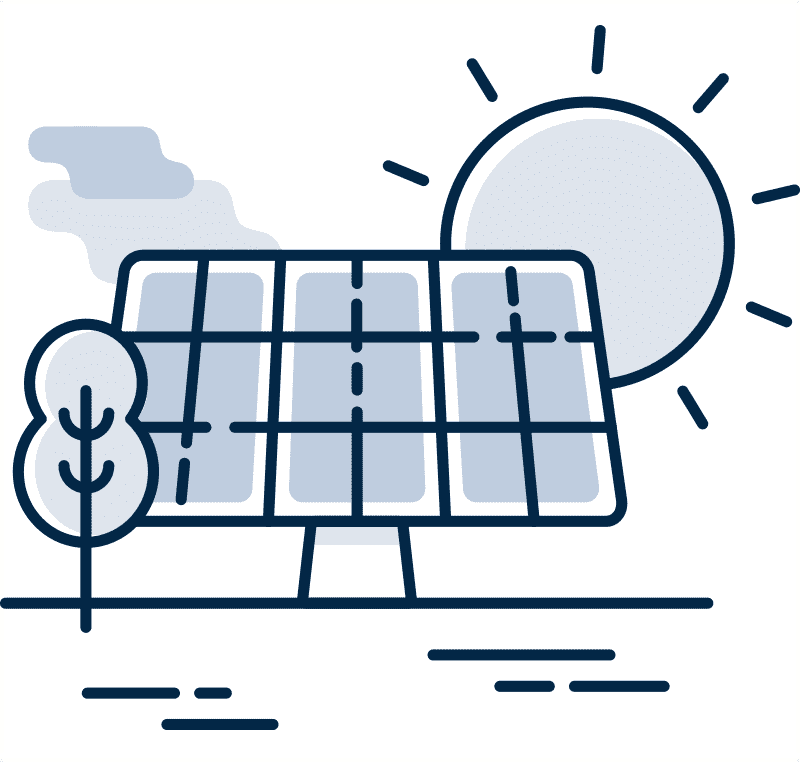
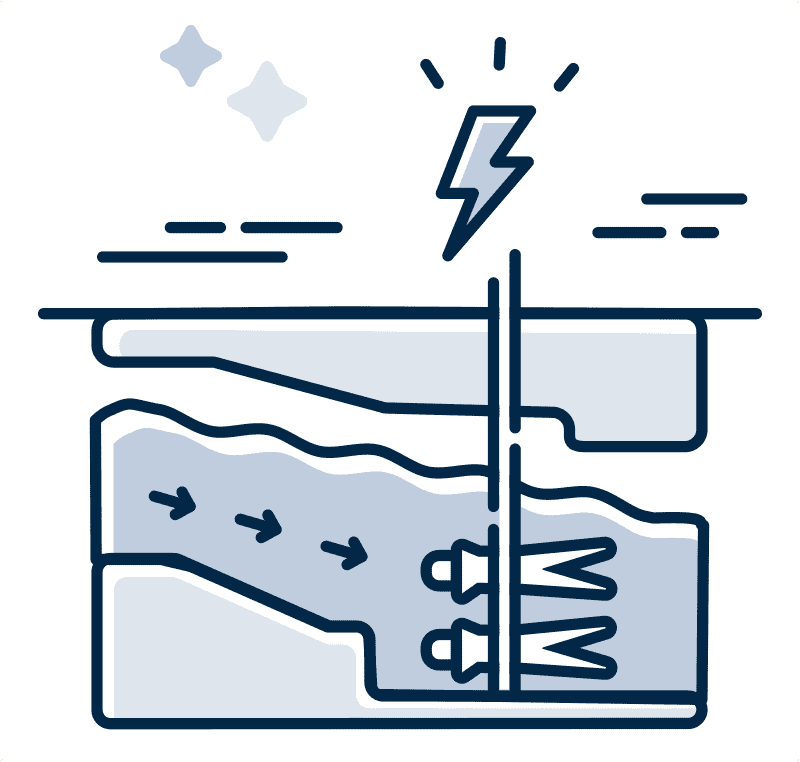
Three geothermal well fields located under the East Quad, Ricci Fields and the parking lot south of Notre Dame Stadium provide water heating for the Walsh Family Hall of Architecture, Ricci Band Rehearsal Hall, Pasquerilla Center and Dunne, Flaherty and McCourtney halls. The new geothermal systems at the East Plant and south of Notre Dame Stadium also provide chilled water that is piped to the campus-wide chilled water distribution system to be used where it is needed on campus.
Solar energy arrays at Fitzpatrick Hall, Stinson-Remick Hall and the Kenmore Warehouse in South Bend reduce carbon dioxide emissions by more than 680,000 pounds annually, the equivalent of removing more than 240 automobiles from the road, reducing over 2.5 million vehicle miles driven or planting more than 1,331 acres of trees.
By the summer of 2021, a 2.5-megawatt hydroelectric generation facility located in Seitz Park on the St. Joseph River in downtown South Bend will supply about 7 percent of the University’s electrical needs and offset nearly 9,700 tons of carbon dioxide annually. Through a partnership with the city of South Bend, the University will capture the energy of falling water and transmit the generated electricity through underground transmission lines to campus.
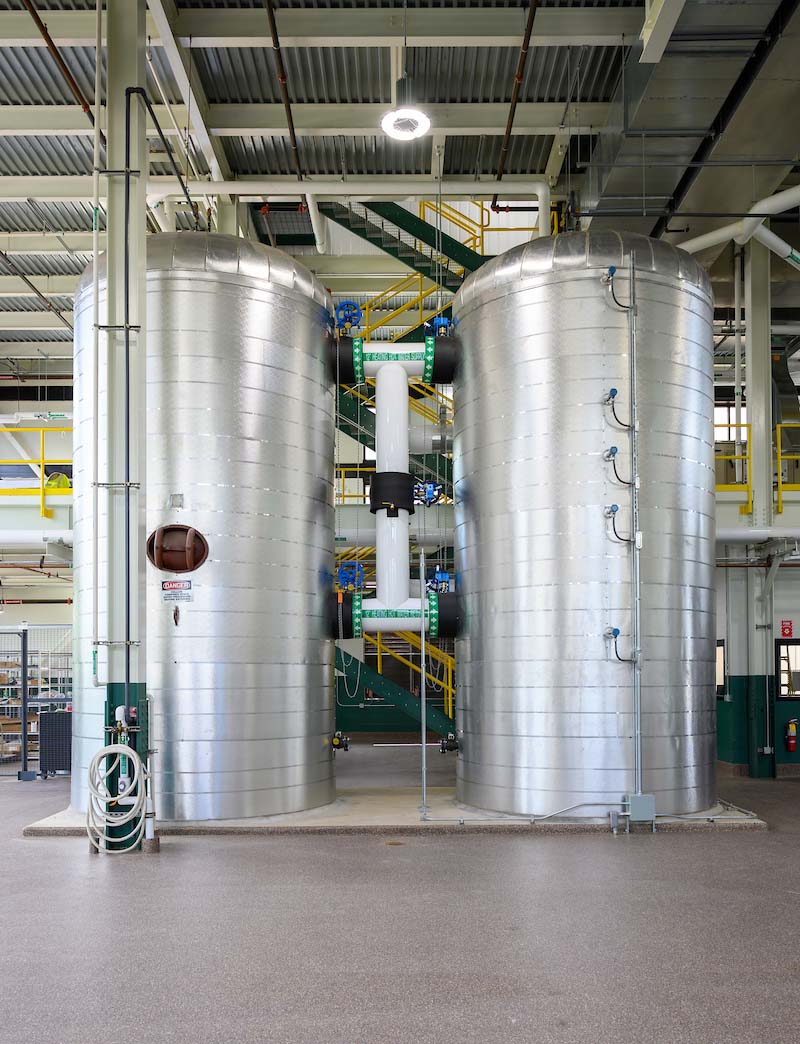
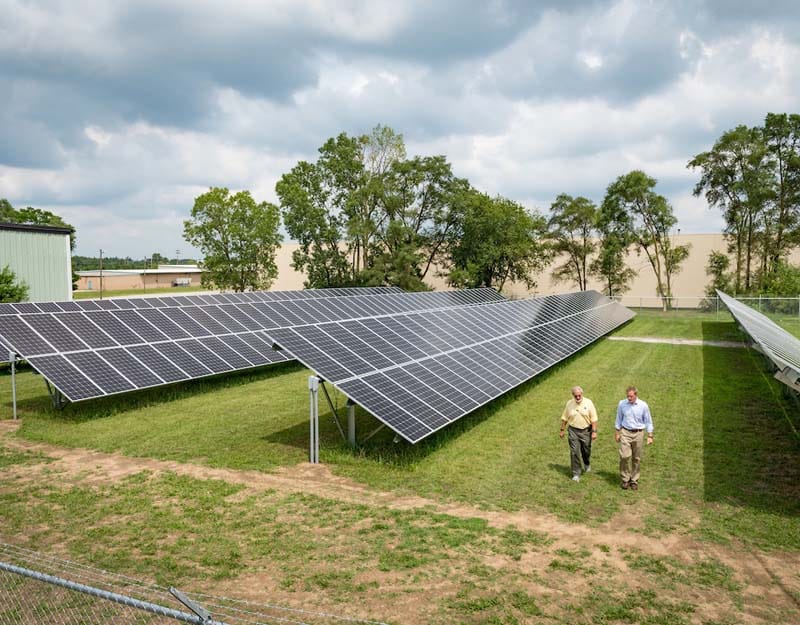

Looking ahead, the University’s Utilities Long-Range Plan is to continue to diversify its energy portfolio by exploring renewable and recoverable energy sources in an effort to subsequently become carbon neutral. Future facilities such as Johnson Family Hall and Raclin Murphy Museum of Art will also use geothermal energy, and some existing facilities may be converted to using geothermal energy.
Through a proposed partnership with Indiana Michigan Power that is pending approval by the Indiana Utility Regulatory Commission, Notre Dame will use 40 percent of the output of the South Bend Solar Project that is expected to be in operation by the end of 2020. The University will also evaluate large-scale regeneration to recover and produce useful energy from other low-grade energy sources.
